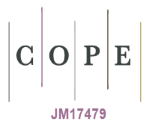Reviewers Guidelines
-
Before you begin
Before you accept or decline an invitation to review, consider the following questions:
- Does the article match your area of expertise? Only accept if you feel you can provide a high-quality review.
- Do you have a potential conflict of interest? Disclose this to the editor when you respond.
- Do you have time? Reviewing can be a lot of work – before you commit, make sure you can meet the deadline.
- Do you need to find out more about reviewing and the peer review process? If so, check out the free tutorials on the Elsevier Researcher Academy, especially the new Certified Peer Reviewer course.
Respond to the invitation as soon as you can (even if it is to decline) – a delay in your decision slows down the review process and means more waiting for the author. If you do decline the invitation, it would be helpful if you could provide suggestions for alternative reviewers.
-
Managing your review
-
Confidential material
-
If you accept, you must treat the materials you receive as confidential documents. This means you can’t share them with anyone without prior authorization from the editor. Since peer review is confidential, you also must not share information about the review with anyone without permission from the editors and authors.
-
How to log in and access your review
-
To access the paper and deliver your review, click on the link in the invitation email you received which will bring you to the submission/reviewing system. If you experience difficulties accessing the paper, you might Contact the section or journal manager.
-
Journal-specific instructions
-
When you sit down to write the review, make sure you familiarize yourself with any journal-specific guidelines (these will be noted in the journal’s guide for authors available on each journal’s homepage).
First, read the article. You might consider spot-checking major issues by choosing which section to read first. Below we offer some tips about handling specific parts of the paper. -
Methodology
-
If the manuscript you are reviewing is reporting an experiment, check the methods section first. The following cases are considered major flaws and should be flagged:
- Unsound methodology
- Discredited method
- Missing processes are known to be influential on the area of reported research
- A conclusion is drawn in contradiction to the statistical or qualitative evidence reported in the manuscript
For analytical papers examine the sampling report, which is mandated in time-dependent studies. For qualitative research make sure that systematic data analysis is presented and sufficient descriptive elements with relevant quotes from interviews are listed in addition to the author’s narrative.
-
Research data and visualizations
-
Once you are satisfied that the methodology is sufficiently robust, examine any data in the form of figures, tables, or images. Authors may add research data, including data visualizations, to their submission to enable readers to interact and engage more closely with their research after publication. Please be aware that links to data might, therefore, be present in the submission files. These items should also receive your attention during the peer review process. Manuscripts may also contain database identifiers or accession numbers (e.g. genes) in relation to our database linking program.
Critical issues in research data, which are considered to be major flaws can be related to insufficient data points, statistically non-significant variations, and unclear data tables. -
Ethical considerations
-
Experiments including patient or animal data should properly be documented. Most journals require ethical approval by the author’s host organization. Please check the Animal Welfare Policy for such cases.
-
Overview
-
If you don’t spot any major flaws, take a break from the manuscript, giving you time to think. Consider the article from your own perspective. When you sit down to write the review, again make sure you familiarize yourself with any journal-specific guidelines (these will be noted in the journal’s guide for authors).
-
- Structuring your review
Your review will help the editor decide whether or not to publish the article. It will also aid the author and allow them to improve their manuscript. Giving your overall opinion and general observations of the article are essential. Your comments should be courteous and constructive, and should not include any ad hominem remarks or personal details including your name.
Providing insight into any deficiencies is important. You should explain and support your judgment so that both editors and authors are able to fully understand the reasoning behind your comments. You should indicate whether your comments are your own opinion or are reflected by the data and evidence. - Checklist
The journal for which you are reviewing might have a specific format (e.g. questionnaire) or other instructions for how to structure your feedback. Below are some general tips on what to include/consider if no other guidelines apply. View the checklist here.
-
Your recommendation
When you make a recommendation, it is worth considering the categories the editor will likely use for classifying the article:
-
Reject (explain your reasoning in your report)
-
Accept without revision
-
Revise – either major or minor (explain the revision that is required, and indicate to the editor whether you would be happy to review the revised article). If you are recommending a revision, you must furnish the author with a clear, sound explanation of why this is necessary.
-
- The final decision
The editor ultimately decides whether to accept or reject the article. Mustansiriyah University plays no part in this decision. The editor will weigh all views and may call for another opinion or ask the author for a revised paper before making a decision. The submission system provides reviewers with a notification of the final decision if the journal has opted into this function.
- After your review
Do not forget that, even after finalizing your review, you must treat the article and any linked files or data like confidential documents. This means you must not share them or information about the review with anyone without prior authorization from the editor.
Finally, we take the opportunity to thank you sincerely on behalf of the journal, editors, and author(s) for the time you have taken to give your valuable input to the article.

















